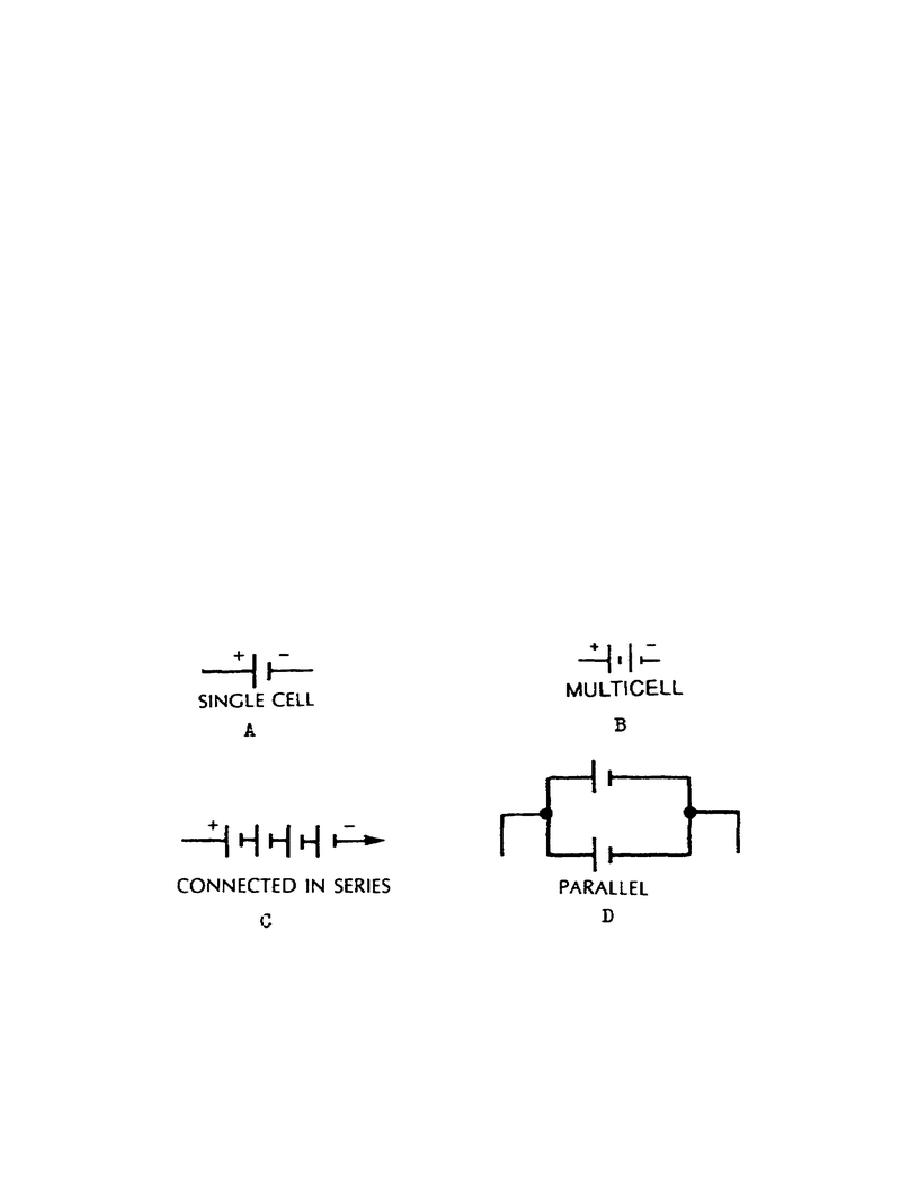
Internal power sources must be presented as an integral component of
the circuit, and are represented graphically by the appropriate
symbol. Some typical power sources are discussed below.
a. Batteries. Most of us use equipment powered by batteries in
our every day life.
Batteries are used to power such everyday
equipment as flashlights, watches, radios, and to start our cars.
They may be small enough to fit inside a watch, or large enough to
propel a submarine through the water. They may be dry cells, such as
used in a flashlight, or wet cells, such as those found under the
hood of your automobile. They may be primary batteries or secondary
batteries. Primary batteries have a fixed supply of energy and must
be replaced when that supply is dissipated. Secondary batteries may
be recharged when their energy supply runs low.
Regardless of the type or size of the battery, the schematic
symbolism is the same.
Figure 1-11 illustrates the symbols used to
represent batteries in schematic diagramming. In schematics, the key
to interpreting batteries is the manner in which they are connected.
Figure 1-11A shows a single cell battery.
Most often, the polarity
of the battery is labeled in the schematic by a (+) and a (-) at the
appropriate pole of the battery.
In the absence of this labeling,
the general rule is that the long line pole is the positive side and
the short line pole is the negative. Figure 1-11B shows a multicell
battery. The symbol does not necessarily represent the exact number
of cells in the battery.
Figure 1-11.
Battery Symbols.
In order to increase the voltage output of a battery power source,
batteries are often connected in series. Figure 1-11C shows a series
connected battery power source. In a series
7
OD1725




 Previous Page
Previous Page
